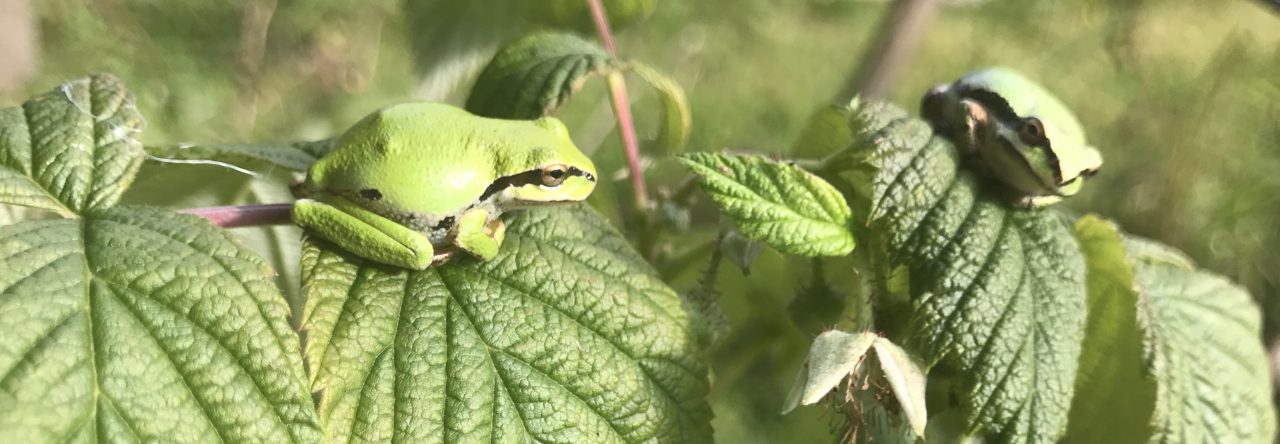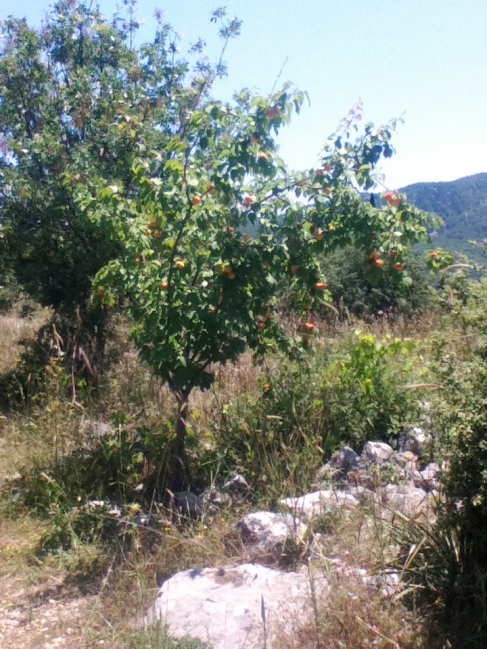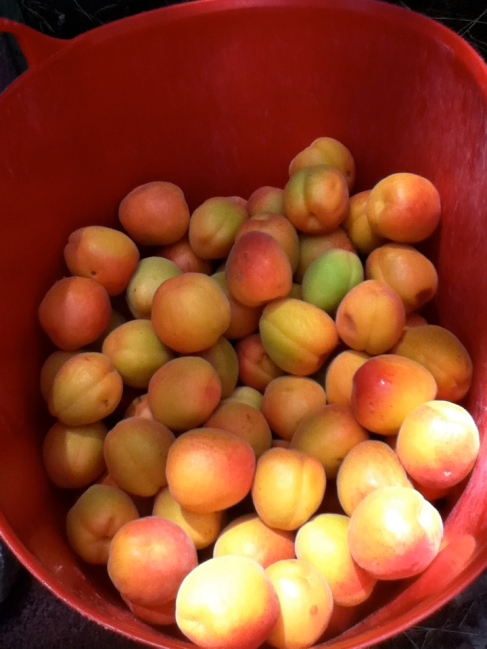This is the result; but first, some back story.
We began work in this garden four years ago. It seems like ago, although it has passed by quickly, but it is not all that much time when you think in terms of trees. With trees, time stretches out before you in decades because the steps that trees take are big long steps that span years. Kaya, on the other hand, takes little steps, so that from one week to the next he is quite a different little fellow.
When we first got here, we had to plant a tree a week. This is because we used a dry, sawdust toilet. Now, most things that I do are driven by necessity, not ideology. We use solar electricity because there is no other kind where we are, for example, not because we are great green giants. But one thing that I do get sort of driven about is water. And although I am not evangelical about it, I disagree with the notion of using water to transport human waste. Overall, although it is stinky stuff and can be full of ick, I can’t see why we don’t face up better to our own excrement and the disposal thereof. To this end, when it came to our toilet, I put my foot down and said no to the septic tank.
This left us with the problem of what to do with our buckets of waste. (They were not as stinky as they might sound, as we used sawdust to bury any deposits, but full is full.) Our answer to this weekly dilemma was to dig extra deep holes when we planted trees and simply empty the buckets into them. A layer of dirt and a tree later, we could consider our toilet flushed.
Over the past four years, as you can easily calculate, we have planted a number of trees. They seemed to like the arrangement just fine.
(Things slowed down a bit last year when we got a separation toilet. If you are interested in knowing more, I will let Google do the talking.)
We have not had a huge amount of fruit from these trees, as anyone who has planted little saplings will know. The first year, I dutifully plucked all the flowers off of the trees. The next year, they bloomed like crazy and I rubbed my hands greedily. Then all the flowers fell off on their own and we had harvest like this: one sweet red cherry, one jujube, two apples. That is when I learned that plants really won’t be convinced to do anything they don’t want to do. If you want them to do something, you have to make them want to. And a young fruit tree is interested enough in thriving that it will not set more fruit than it is ready to, or at least the ones in our garden won’t!
So when Ali asked me if I had taken a look at the apricot tree down at the Old Water Tank terrace lately, I skipped down the hill and was delighted to be greeted by the tree pictured above. Kaya and I went down to pick them (he was in charge of sampling) and were rewarded with a nice heavy bucket of fruit:
I picked some of them before they were, strictly speaking, very ripe, but I didn’t want the bugs to get into them, and my mother had mentioned that she would like the apricot jam to be not too sweet. I have made jam with half of them, and it is tart, so she ought to like it. With the rest I think I may try my hand a fruit leather. These are tasty apricots, but not crunchy, which is how I prefer to eat them. We have a crunchy apricot bearing tree at the top of the garden, by the road, but those fruits are still green.
My first overabundance of fruit. A sweet predicament!



how fantastic I bet they are so much better than the nasty apricots you can buy.. that i never do buy!.. because they never taste right.. you must be thrilled. c
I am! But I recently read this article about glabrous apricots and that got me all itchy to find a tree. This is the way in which I feel like gardening and collecting are the same thing. Plus, I really like the word glabrous (means they have no hair).
It is so nice when nature comes through with an abundant crop.
And she always makes it look so easy!
What a wonderful harvest! That tree was truly laden with fruit. I’ve not bought apricots in ages; they just don’t taste right anymore. This year, though, I’m determined to increase the fruit in my diet and the organic stalls at the farmers market will be my suppliers. Your post has me hoping that they have good-tasting apricots this year. Maybe I’ll be making apricot jam, too. 🙂
I sort of fell in love with apricots when I came to Turkey. It is hard to find the good ones, but one good thing about jam is that it redeems the mealy ones! I hope you find some worthy of sinking your teeth into.
Ooh, how exciting!! I’d be beside myself with all those apricots! 😉
I really admire your commitment to not having a septic tank. I think that there are not very many people who would be able to make that switch. I studied abroad in West Africa in college and got pretty used to no running water. It’s really fine once you get used to it.
And it looks like you now are surrounded by some beautiful trees 🙂
That’s so interesting! It is pretty amazing what a person can get used to- we don’t give ourselves enough credit, I think.
great post… the toilet details were so interesting… good for you – as a society we should “face up to” waste disposal!
Love the part about the apricots – do you ever put almonds or the apricot kernels into your jam? Oh, and what are jujubes?
Thank you for your kind comments! I do use the apricot kernels sometimes, although I read a rather sobering warning recently about how their almond flavor comes from arsenic. Jujubes are the fruit of ziziphus jujuba, a deciduous tree, and they are also known as red dates or Chinese dates (although they are, botanically, not dates at all). They are tasty when dried, but when fresh they are unbelievable- like crunchy honey.
Apple pips contain arsenic too! Ziziphus… what a wonderful name! I think I have seen these red dates in Chinese supermarkets… I’ll have to buy some next time!
Apricots, one of my favorite fruits, I am so jealous of your tree. Would love to be able to pick my own.
For my part, I wish I could grow Chinese chives like yours! Mine are so puny…
That is a lot of delicious looking fruit!
I think fruit always looks better in a big pile!
I love your apricots! Last season I bought apricots from our green grocer but they were so disappointing. Woody, dry and zero flavour. I bet yours are magnificent by comparison. xx
It is a treacherous business buying apricots. More so than other fruits I think. These ones are tasty, it is true, but not perfect texture-wise. The boys adore them though!
Maybe some pickles?
What a thought! I’ve enjoyed pickled plums, but I’ve not tried apricots. Oh wait. Is that apricot pickle or pickled apricots?